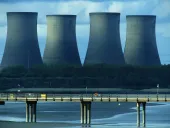The hidden costs of Variable Renewable Energy – or just urban myths?
By Agostinho Miguel GarciaAlmost all in this sector have already read many texts and technical reports on the hidden costs of intermittent sources or Variable Renewable Power (VRP) as solar PV and wind. By the way, I am intentionally not including CSP, as it has storage capacity and thus can even provide baseload power.
Are all of the arguments really true? Let us look at some of the most common ones:
1. For each installed MW of VRP there is the need for 1MW of conventional power that must be ready to generate whenever the sun is not shining or wind is not blowing. Now, the conventional units are installed already in the grid. Thus the flexibility of those units is the sole issue.
Technically speaking, only some of the conventional units are able to be used in a flexible way, namely gas and new coal turbines plus hydro, which are the most flexible units of them all, by the way. The water availability may be a limitation, more for wind than solar as when it rains the sun does not shine.
2. For each MW of VRP generated at least one unit of conventional-based power is not generated and costs are higher due to fixed capacity costs. Coal and gas units will be generating less indeed, but almost all PPAs for conventional power have the price of electricity defined as fixed capacity plus a variable cost.
Whilst in Europe, for example, wind and solar are more expensive than the conventional, the same is not true in many countries in Asia, as India for example, when new built is compared or when LCOE analysis is made.
The real problem is the number of hours of the business models of the conventional generation that get impacted by VRP, and that is upsetting investors and lenders involved in those projects.
3. Transmission costs are never paid by VRP. This is true, but is also true for any generation project. A coal power plant next to a coal mine does not pay for the transmission. That is added on the cost of the electricity for the consumers based on the generation, transmission, and the distribution costs and also the overhead of the companies involved.
Optimising the transmission costs for decentralised generation as solar on-grid PV and wind is required, and programmes like the Renewable Energy zones in California, the "Renewable Energy Development Zones" in South Africa, and solar parks in India are exactly doing that and in the latter the IPPs are paying for the connecting infrastructure to the grid.
The transmission infrastructure laid exclusively for VRP is indeed less used than for conventional power, but the objective is to integrate a mix of generation, where initiatives as wind-solar parks will fill the extra capacity. Moreover, once storage becomes more cost-competitive those lines will be fully used, so it is just a matter of time.
4. VRP is more expensive than the prices of the PPAs. I guess that this extreme view questions export banks, credits to manufacturers, development banks, and other initiatives national or international targetting reducing the cost of VRP.
Again, nothing is hidden, the same initiatives and programmes exist for conventional fuels as well as equipment for conventional power generation, so "subsidies" are part of the business of power generation and not exclusive to VRP.
5. VRP cannot supply 100% of the power needs. It is true for the time being, but there is nothing hidden. The vision is to have a mixed generation of clean sources (it does not include nuclear) from VRP, hydro, and storage.
Clearly the near future will be chemical batteries, pumping storage, PV, wind, and CSP plus geothermal and offshore energy as tidal and waves will join offshore wind with biomass being kept for any emergency/back-up situation. VRP is just part of the puzzle and not any holy grail.
Whilst integration VRP is not straightforward and requires good transmission capacity and options, match between generation and load and a good dispatch mechanism, VRP has a lower cost than any conventional fuel that it replaces.
And for the future planning of a country, there is no value in building up conventional capacity, but actually ramp up VRP using the existing capacity of the grid and the generation mix.
This is an exercise that is different per country and even state, province ,or region, but the solutions exist and they are not hidden costs, just the natural evolution of the generation of power, which needs to move away from polluting sources to clean ones.




















 Advertise
Advertise







